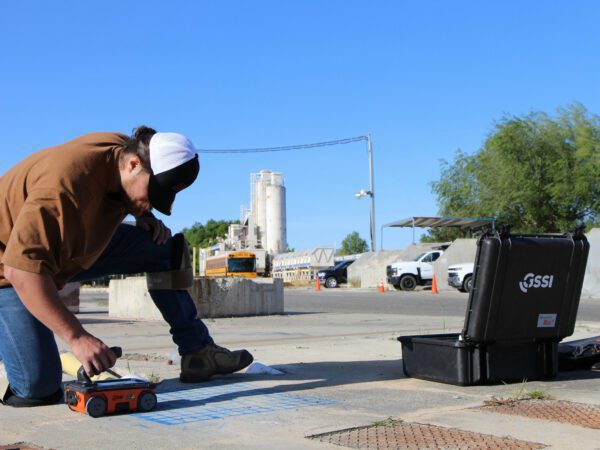Advanced Concrete Scanning Techniques: Guaranteeing Structural Integrity
Advanced Concrete Scanning Techniques: Guaranteeing Structural Integrity
Blog Article
Unveil the Transformative Power of Concrete Scanning in Maximizing Performance and Security
Concrete scanning has emerged as an important device in the building and construction sector, providing unparalleled benefits in improving job effectiveness and making certain safety and security criteria. The transformative power of concrete scanning exists in its ability to provide detailed understandings and real-time data, transforming exactly how tasks are intended and performed.
Importance of Concrete Scanning
Guaranteeing the structural honesty and safety and security of building and construction projects starts with the important action of carrying out comprehensive concrete scanning. Concrete scanning is a non-destructive technique made use of to discover and map subsurface components within concrete structures.
In addition, concrete scanning assists in enhancing project timelines and spending plan by staying clear of unanticipated costs and delays that may arise due to unanticipated blockages within the concrete. Eventually, spending in comprehensive concrete scanning is a proactive method that boosts both performance and safety in construction tasks.
Exactly How Concrete Scanning Functions
Concrete scanning operates as a critical tool in construction projects by utilizing advanced modern technologies to discover and map subsurface aspects without causing structural damage. Ground Passing Through Radar (GPR) and Electromagnetic Induction (EMI) are two primary methods utilized in concrete scanning. GPR jobs by producing high-frequency radar pulses into the surface, which recuperate when they encounter subsurface items or gaps. The moment taken for the signal to return indicates the depth and location of the objects. EMI, on the various other hand, makes use of magnetic fields to recognize variations in material structures, such as identifying rebar or avenues within concrete structures.
Throughout the scanning procedure, the data collected is analyzed in real-time, allowing prompt identification of possible hazards or barriers below the surface. By utilizing these innovative technologies, concrete scanning significantly lowers the threat of expensive problems and injuries on building sites.
Advantages of Concrete Scanning
Using innovative scanning technologies in construction jobs supplies a multitude of advantages, boosting both efficiency and safety and security on-site. Among the primary advantages of concrete scanning is the ability to spot and locate embedded objects such as rebar, post-tension cables, and conduits accurately. By determining these aspects prior to drilling or reducing into concrete structures, the threat of unintentional strikes is considerably lowered, preventing prospective injuries to workers and damages to the structure itself. Furthermore, concrete scanning helps in preparation and creating better, as it gives specific information concerning the place and deepness of architectural elements.

Study: Concrete Scanning Success

In one more case, a construction company used 3D concrete scanning to examine the problem old concrete structures in a historical building. The detailed scans provided useful understandings right into the extent of wear and tear and helped focus on upkeep efforts properly. By proactively dealing with locations of worry determined via scanning, the firm was able to prolong the life-span of the structure and make sure passenger safety.
These instance studies emphasize the transformative power of concrete scanning important source in enhancing effectiveness, precision, and here safety and security in construction projects.
Carrying Out Concrete Scanning in Projects
Implementing innovative scanning modern technologies during construction projects has actually become significantly necessary for improving precision and security. By integrating concrete scanning into project planning and implementation, construction groups can identify possible threats, such as rebar or post-tension cords, hidden within concrete frameworks. This positive approach lessens the danger of mishaps, delays, and costly rework, ultimately bring about extra effective project timelines and budgets.
To implement concrete scanning properly, job managers ought to team up closely with skilled scanning experts to establish the most ideal scanning techniques for the details job needs. Involving scanning experts from the onset of a task enables the team to create comprehensive scanning strategies that resolve essential locations of concern and make certain extensive information collection.
Additionally, integrating concrete scanning into routine project operations can streamline decision-making procedures, as real-time scan data provides prompt understandings into the problem of concrete structures - Concrete Scanning. This data-driven approach promotes notified analytic and allows teams to make modifications quickly, fostering a society of performance and safety and security throughout the project lifecycle

Final Thought
Finally, concrete scanning plays a crucial duty in enhancing effectiveness and safety and security in construction tasks. By utilizing sophisticated modern technology to map and spot out underlying frameworks within concrete, this procedure assists to stop pricey errors, make sure architectural stability, and minimize risks on site. With the ability to uncover hidden elements and offer exact data, concrete scanning verifies to be a beneficial tool for maximizing task outcomes and making the most of overall success.
Concrete scanning is a non-destructive approach utilized to find and map subsurface aspects within concrete frameworks. Additionally, concrete scanning assists in optimizing job timelines and budget plan by staying clear of unexpected prices and delays that here are the findings may develop due to unanticipated blockages within the concrete. One notable situation research study entails a large renovation project where concrete scanning played a critical function in making sure project success.In an additional instance, a construction business used 3D concrete scanning to evaluate the condition of aging concrete structures in a historic structure. By integrating concrete scanning into job preparation and implementation, building groups can identify prospective hazards, such as rebar or post-tension cords, concealed within concrete structures.
Report this page